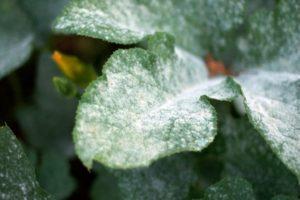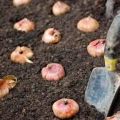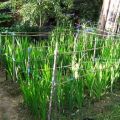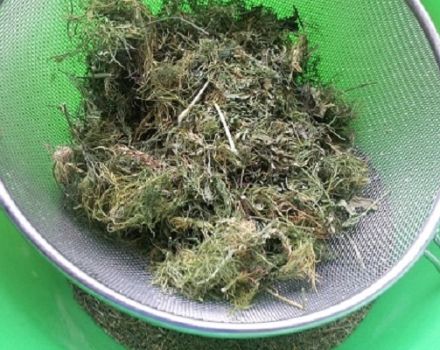Description of the Byzantine gladiolus and the rules of planting and care in the open field
In harsh climatic conditions, people have learned to grow a variety of plants, but the representatives of exotic countries cannot survive the winter cold. And yet, don't despair. Despite their exotic appearance, some flowers are unpretentious. One of these wonderful plants is the Byzantine gladiolus. An exquisite flower will be appropriate in any garden.
Description of the plant
Graceful representatives of the Byzantinus family rarely grow taller than 60 cm. In some gardens, you can find giants, whose height reaches 120 cm. The stem of an elegant handsome man is decorated with a row of 10-20 crimson, funnel-shaped, large flowers. Refined gramophones are adorned with white touches.
Elegant flowers interspersed with narrow purple buds and collected in groups of 5-8 pieces. The spiky leaves of the Mediterranean guest are gathered in a fancy fan. The length of each xiphoid leaf reaches 35 cm.The width of the leaf plate does not exceed 1 cm.
Features of the Byzantine gladiolus
The Byzantine beauty is an unpretentious flower. It can easily withstand temperature extremes in a sharply continental climate. Minor frosts are not afraid of him, so the plant feels good even in the flower beds of the Ural and Siberian gardeners.
Selecting and preparing bulbs before planting
4 weeks before planting, the bulbs are taken out of storage, examined, damaged and diseased specimens are removed. Healthy bulbs are glossy and firm. Large specimens with a diameter of 7-8 cm can be cut in half. This must be done carefully so as not to damage the buds located on the surface of the bulb. Thus, the seed is renewed.
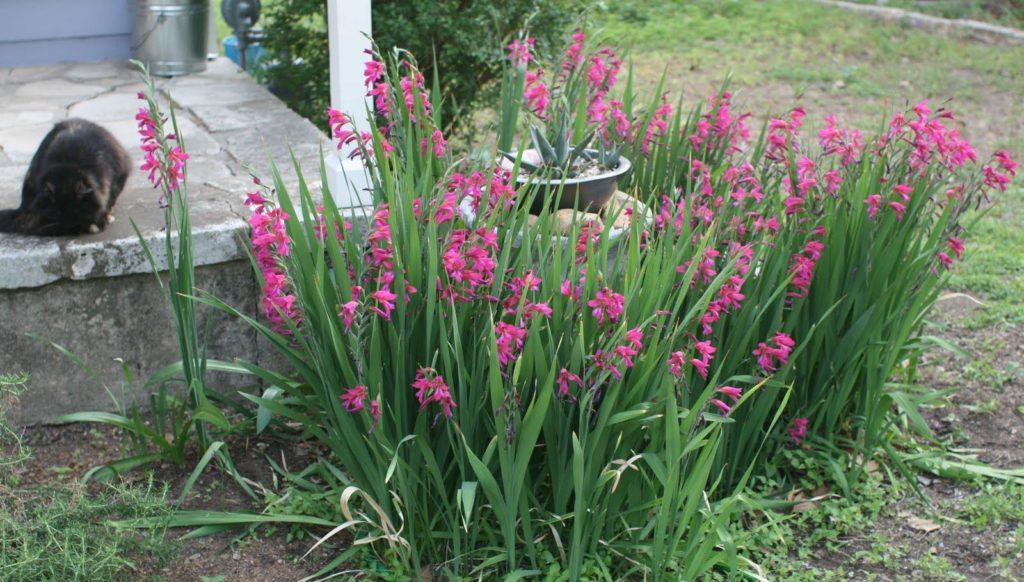
Tubers with minor defects are put in order by cutting out the affected areas. The procedure is convenient to carry out with a sharp knife. The wounds are treated with brilliant green or sprinkled with crushed coal. Then the bulbs are peeled off. After processing, the seed is spread out on a flat, dry surface. In this case, you need to ensure that the buds on the bulbs are located at the top.
The place for sprouting tubers should be warm and protected from direct sunlight. In comfortable conditions, the first shoots will appear in a week. Before planting, the seed must be soaked in a 3% solution of ferrous sulfate or kept for a couple of hours in a 0.3 solution of potassium permanganate.
Special care is required for miniature onions - babies that grow on the surface of a young tuber during the growing season. Children are taken out of storage a month before planting and placed in a warm place for 2 weeks. Then they are laid out on a damp napkin laid on a saucer. Place the dishes in a bag and put them in the refrigerator. After a few days, sprouts will appear on the bulbs. In this form, miniature corms can be planted in the ground.
How to plant a flower correctly?
In order to grow gladiolus in the open field, it is necessary to plant the bulbs according to all the rules of agricultural technology.

Landing dates
Despite the fact that the plant is considered frost-hardy, the flower is not able to withstand severe cold weather. Therefore, the autumn planting of gladiolus is possible only in warm climates. The plant is planted in early October. In this case, the bulbs will have time to take root before the first cold weather. For the winter, the flower bed is covered with spandbond.
In regions with harsh climatic conditions, gladioli are planted in the spring, after the onset of stable heat. Usually this time falls in mid-May. For the normal development of seedlings, it is important that the air temperature does not drop below 10 degrees.
Site selection and preparation
A sunny, easily ventilated area is suitable for planting the Byzantines. It is advisable to set up a flower garden on a small hill. Gladiolus is picky about lighting and will not bloom fully even in semi-shady places. The plant prefers light, sandy loam soil. Lime and humus are added to such soil. Clay soil is heavy for a Byzantine, so sand is added to it. Manure is not introduced into the planting pit.
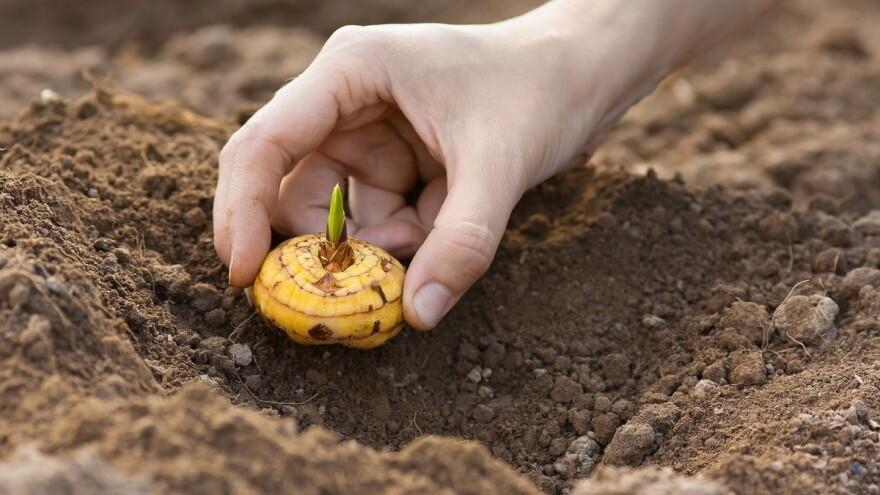
The location of the flower bed must be changed annually. This maneuver helps to avoid illness. Do not plant gladioli in the place where phlox or asters grow. These crops are prone to the same diseases. Cucumbers or garlic can be good precursors for Mediterranean beauties.
In the eastern part of the garden, gladioli bloom earlier.
Planting gladioli
2-3 weeks before planting, it is necessary to prepare the soil in the garden bed. To do this, 1 sq. m. of soil add a couple of handfuls of ash and 15 g of superphosphate. Before planting, the seed is soaked in a 3% solution of ferrous sulfate. The prepared bulbs are placed in the ground. The depth of the fossa depends on the size of the corm and the type of soil. If the soil is light, the bulb is planted at a depth of 10-12 cm. In clay soil, the seed cannot be placed at a depth of more than 8 cm. A depth of 4-5 cm is sufficient for planting children.
A layer of sand is poured at the bottom of each hole. A small layer of sand is poured on top of the planted corms and the remaining space is filled with humus. Gladioli are large plants, so the distance between the flowers should be at least 20 cm.The distance between the rows is 30 cm.
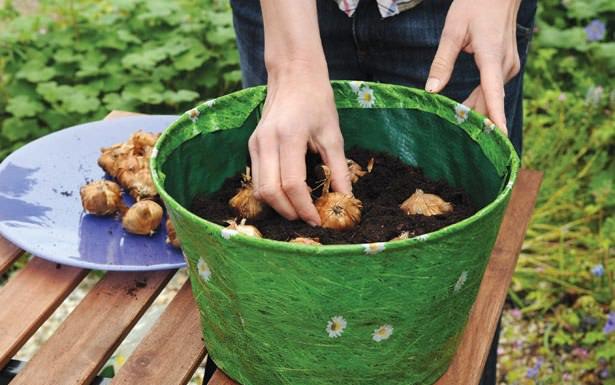
The main mistakes when planting gladioli:
- Strong penetration of the seed. In this case, a large bulb will grow, but you can not wait for flowering.
- Thickening of plantings. Closely planted plants interfere with air circulation. In wet, rainy weather, this can lead to fungal infections.
Features of plant care
Gladioli are demanding to care for. They need to be fed and tied to a support in time. A tall plant can hardly support its own weight and often breaks.
Watering rules
Before the onset of the flowering period of gladioli, it is enough to water 2 times a week. Flowering plants need to be moistened as the soil dries. The seedlings are watered abundantly, because the roots of the plants go deep into the ground. With insufficient watering, the leaves and buds of the plant wither.
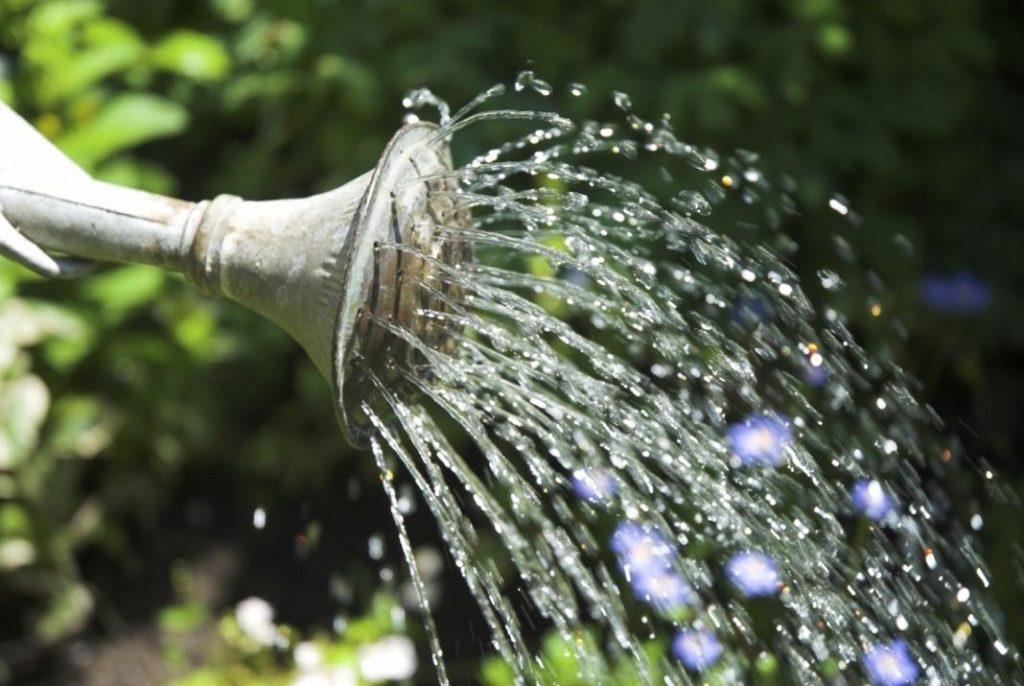
Loosening and weeding
The soil under the gladioli must be loosened and weeded after each watering.The procedure must be done regularly, otherwise tall handsome men will fade ahead of time.
Fertilization
When applying top dressing, do not get carried away with nitrogen fertilizers. An excess of organic matter can lead to a build-up of green, leafy mass and poor flowering. In addition, excess nitrogen can trigger an outbreak of fungal diseases. If such a top dressing is nevertheless applied, then the food is supplemented with preparations containing copper. Caution should be used when feeding with a high phosphorus content. Experienced gardeners recommend using a mixture of 10 g of ammonium nitrate and the same amount of potassium salt. To achieve a good result, it is advisable to apply complex fertilizer to the soil.
Gladioli are fed 3 times:
- When 3-4 leaves appear on the plant.
- In the phase of 5-6 leaves.
- Before flowering.

It is better to make top dressing in the form of an aqueous solution. So the seedlings will better absorb nutrients.
Disease and pest control methods
The worst enemies of gladioli are thrips. Small pests are dangerous to plants at any time of the year. During the growing season, thrips destroy the buds, and in winter they attack the bulbs. As a result, tubers lose their elasticity and dry out. Insecticides are used to combat ailments. They effectively fight pests Karbofos or Fitoverm.
In order to avoid trouble, you need to take care of the protection of the planting material in advance. For this, the corms are soaked in an insecticide solution. The same planting agent is sprayed during the growing season. For a stable result, the procedure is performed twice a month. The final processing is done before digging out the bulbs. Often the plant is affected by bacterial scab. In this case, 3% ferrous sulfate will come to the rescue. Most often, gladioli are affected by Fusarium. Fungicides will help get rid of the fungus.
Cleaning and storing the Byzantine gladiolus
After the end of the flowering period, the bulbs are dug up. It is better to extract tubers with a pitchfork - so the planting material can be dug out without damage. The stems of the plants are cut, leaving a stump 2 cm long. The bulbs are examined, young specimens are separated, laid out on a dry surface and dried for 3-4 weeks.
On young tubers, miniature bulbs grow - children. They are folded separately and dried well. After 3-4 weeks, the planting material is stored in a cool place. It is recommended to store tubers in a basement or underground. In a city apartment, the bulbs can be stored in the bottom of the refrigerator. The planting material must be wrapped in paper and checked periodically. The main thing is that the bulbs do not freeze or get wet.
